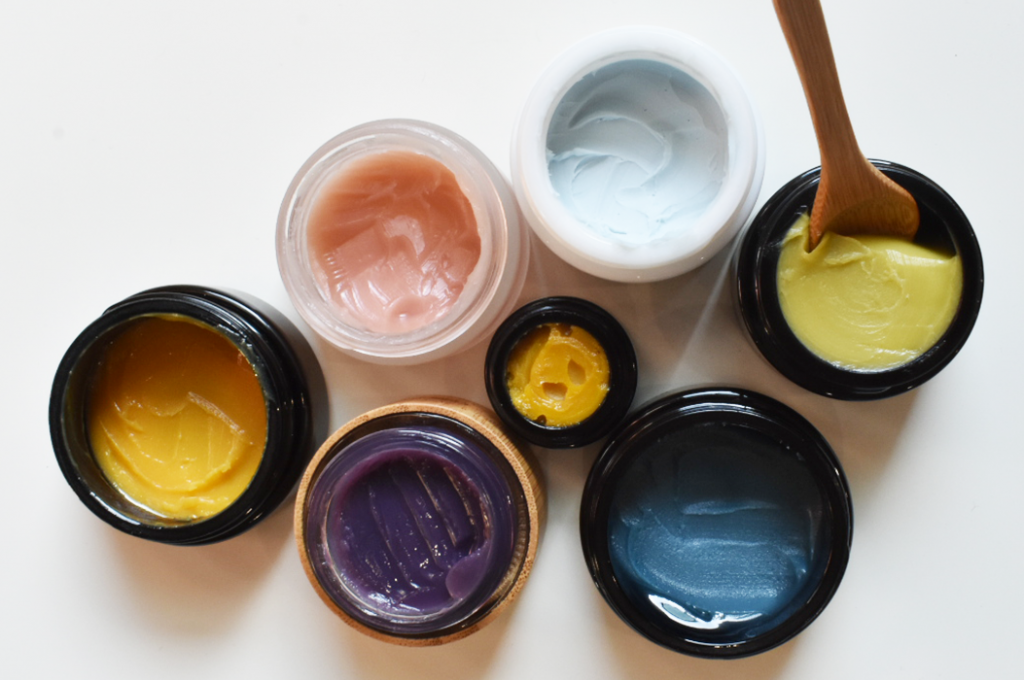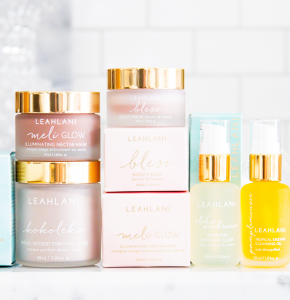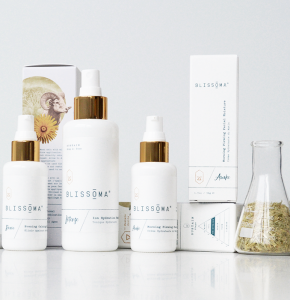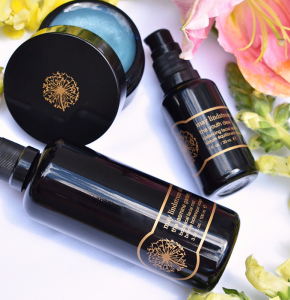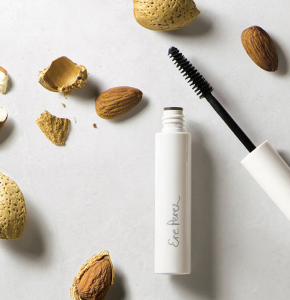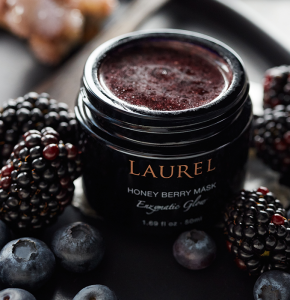Have you ever wondered why your favorite balm or cream is sometimes a slightly different texture or color? Ever wondered why scents vary the tiniest bit from batch to batch of your favorite body oil? Or why the color of a serum isn’t quite the same as it looked in the picture you saw online?
These are all good questions, but when you shop for organic, natural, nontoxic, small-batch skincare from brands you trust (as you can trust all the brands here at Integrity Botanicals because we carefully vet them!), you are bound to find some variation in the color, texture, and scent of your products.
Why?
Well, imagine you’re shopping for apples at the grocery store or farmers’ market. (For some of us during this pandemic, this is a distant memory! but stay with me.) So you go over to a big section of apples. You find the organic ones. You find the variety you like (for me, it’s Fuji or bust!). And then you choose your apples, right?
Well, now imagine that every single apple in the section is exactly identical. Every single one has the same pattern of red and green and gold on its skin, each one is exactly the same shape, each stem is trimmed to the exact same length. That’s weird, right? And a little creepy! We don’t— can’t!— expect our produce to look exactly the same every time. That wouldn’t be natural. It definitely wouldn’t be organic!
You can see how this applies to your products, right? Every lovingly hand-made, artisanally crafted, small-batch produced product is going to contain some variation. For this, the third and final installment in our blog series about product freshness, potency, and variation, we reached out to several of our favorite brand founders to find out more about the differences in products from batch to batch, and all the ways this is not just a good thing, but a great thing!
Leah Klasovsky, Founder & CEO of Leahlani Skincare, summed it up nicely.
“When you are utilizing ingredients from nature, especially those that are organic, raw, unfiltered, and minimally processed- there will always be variations from batch to batch. I have learned to expect fluctuations in color, texture, and aroma from nearly all of the fresh ingredients we receive throughout the year. Natural variation occurs from changes in harvest; this can transpire for many reasons- such as the amount of rainfall to the fertility of the soil. For example, with raw honey, the nectar collected during different bloom seasons will have a significant impact on the color, taste, and texture of the honey. When I first started formulating, these changes used to freak me out. Each finished batch was slightly different in color and aroma. Now, it has become one of my favorite things as a formulator- reminding me of how magical fresh ingredients are to work with.” – Leah Klasovsky
(If you want to try a Leahlani product that features honey, we love and recommend Honey Love Microdermabrasion Exfoliator. It’s an incredible multitasker that I love to use as a mask.)
Honey isn’t the only crop that can change the look or feel of a product slightly from batch to batch. Julie Longyear, Herbal Chemist and Founder of Blissoma, explains how herbs and plants, like lavender, vary due to where exactly they were grown, and how the weather affects crops over time.
“The aroma and color of our products can vary slightly from season to season as we are sourcing fresh herbs and oils and we don’t do any standardizing or refining processes on them. That means if the season was a little more dry, or a little more sunny, or the herb came from a different country due to a shortage with a primary supplier then there can be slight differences. Plants produce their unique chemistry based on their environment, so all the shifts in soil, sun, rain, and nutrition really matter. A lavender oil from Bulgaria will smell different from a lavender from France. Even the growing altitude matters. We consider these slight variations to be part of the beauty of working with natural ingredients as it is a direct tie to the elements of the earth.” – Julie Longyear
(If you like the sound of lavender oil, try Blissoma’s Peace– Evening Calming Elixir or Intense– Ion Hydration Tonique.)
May Lindstrom pointed out that this slight variation in products is actually a great way to tell that you’re buying truly natural products!
“Color and aroma variance from batch to batch with our unique treats are not only absolutely normal, but reason for celebration. We do not add any artificial coloring, fragrance, or stabilizers to ensure each bottle is identical. Simply, they cannot be. With all our goodness coming purely from minerals and plants, differences between each harvest and batch are to be expected and embraced. We never manipulate our treats just for visual or scent appeal – the formula itself and the good it gives to our skin is the first priority.” – May Lindstrom
And Ere Perez explains that the variations in color and texture in no way impact the effectiveness or potency of a product.
“When utilizing ingredients from nature, there can be color and consistency changes from batch to batch. Since our mascaras are made with waxes, using them in winter months may cause the formula to be slightly thicker due to cold, so we recommend warming it in a pocket for a few moments before applying. Similarly, in the summer months it is best to make sure they are stored in cooler areas. Another example is color [… it] can change from batch to batch, but this does not affect the potency of the product.” – Ere Perez
It’s not always easy to explain these variations to consumers, and it is a continual process to make sure that the quality and efficacy of any given product remains constant, as Susanne Norwitz, creator of Maya Chia Beauty tells us.
“Oh my goodness, this is a big deal for us. For anyone in the natural and clean space. I think anyone in this space will tell you that ensuring consistency in scent and texture is a massive challenge as lots can vary and then that can throw off your formulation. Over the years, we’ve created several different variations of our formulations to account for when a butter is too soft or a scent too pungent, but still, we are constantly having to re-evaluate our sourcing and formulations because of variations from crop to crop. I hope that natural consumers are beginning to understand, even though we take great pains to ensure consistency in texture and scent, we cannot help that we work with natural raw materials and things inevitably will change.” – Susanne Norwitz
(One of my all-time favorite products is Maya Chia’s The Super Blend, and I can tell you, they always get it just right!!)
So, you may be thinking, what do these variations actually look like? If you, like me, are a big fan of La Bella Figura’s Crema Virtuosa Night Cream, you’ll notice that the color changes slightly from batch to batch. Same with Arcana’s Nine Herbs Charm Clarifying Face Serum. Mahalo’s The Petal Mask, The Rare Indigo Balm, and The Unveil Cleanser Melt Concentrate all show great variations in color from batch to batch because the ingredients are fresh and unaltered, so, as with anything in nature, there are always changes. Mahalo’s fellow Hawaiian brand, Honua Hawaiian Skincare, also sees these changes; their Hawaiian Beauty Water and Pa’aKai Cleansing Cream go from being bright pink to really muted with certain batches. And of course, May Lindstrom’s iconic The Blue Cocoon balm’s shade of blue changes depending on many things, one of which is the weather or season.
May herself told us that, “the only product in our collection that is visibly susceptible to seasonal change is The Blue Cocoon. This is not about potency, however, it is about melting point. The Blue Cocoon is formulated to melt at the touch of skin, so when room temperatures match body temperature, this concentrate can move from a solid form to liquid state. In cool weather, the balm will be more solid and pale in color and a bit softer in scent. In warmer weather or in heated rooms, as The Blue Cocoon softens (or even liquefies) it will appear darker and more fragrant. All variations contain the same incredible anti-inflammatory action that makes this treat so very special and transformative for the skin.”
Laurel Shaffer, Owner and Formulator of Laurel, has good advice about how to deal with the changing textures of a product.
“It’s important to store our products in a cool, dry place. Balms are especially effected by high temperatures. If your balm becomes soft or melted during warm summer months, you can pop it in the freezer for 30-60mins to restore its texture and the product is still just as effective! Our Honey Berry Mask has raw honey, which means it has not been processed in any way in order to make it stay a liquid consistency. In winter months, raw honey can solidify in cold temperatures. To use your honey mask if it has solidified, put a teaspoon of mask in your hand and trickle in some hot water. This will soften the mask immediately, and applying to moist skin will help as well. You can also put the jar someplace warm in your home, or even in a warm water bath with the lid on. The honey is still equally as effective and potent no matter the texture.”- Laurel Shaffer
You may notice that we ship Laurel’s balms with ice packs in the summer to try to prevent the balms from getting grainy, or at least the reduce the amount of time that it may sit in the heat.
This isn’t only an issue to think about once you’ve received a product, but also something formulators are thinking about as the products are being created. “Our production studio is always kept below 80 degrees Fahrenheit,” says Julie Longyear of Blissoma, “and we store sensitive ingredients in the refrigerator to preserve their freshness. Cooler temperatures slow down chemical reactions, so that’s beneficial to antioxidants and the chemical structure of oils as well as to slowing microbial growth.”
I love learning these things about the products I use— it helps me appreciate the immense care and love that goes into making every single one! I certainly wouldn’t want to live in a world where every apple or flower— or balm or serum, for that matter— looked exactly alike. In the same way that part of life is accepting change and seeing imperfections as gifts, I like to know that the things that cause variations in our products are the very things that make them powerful.
